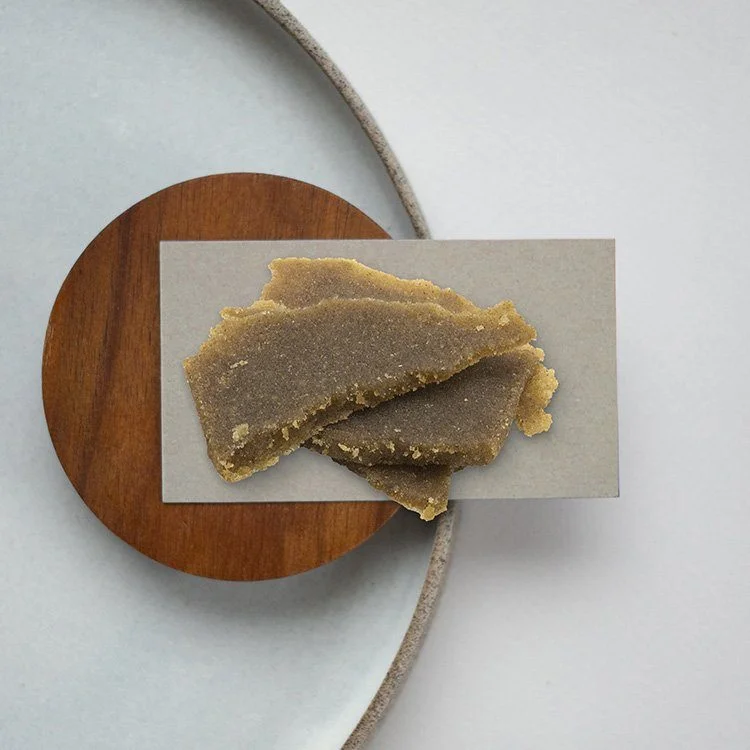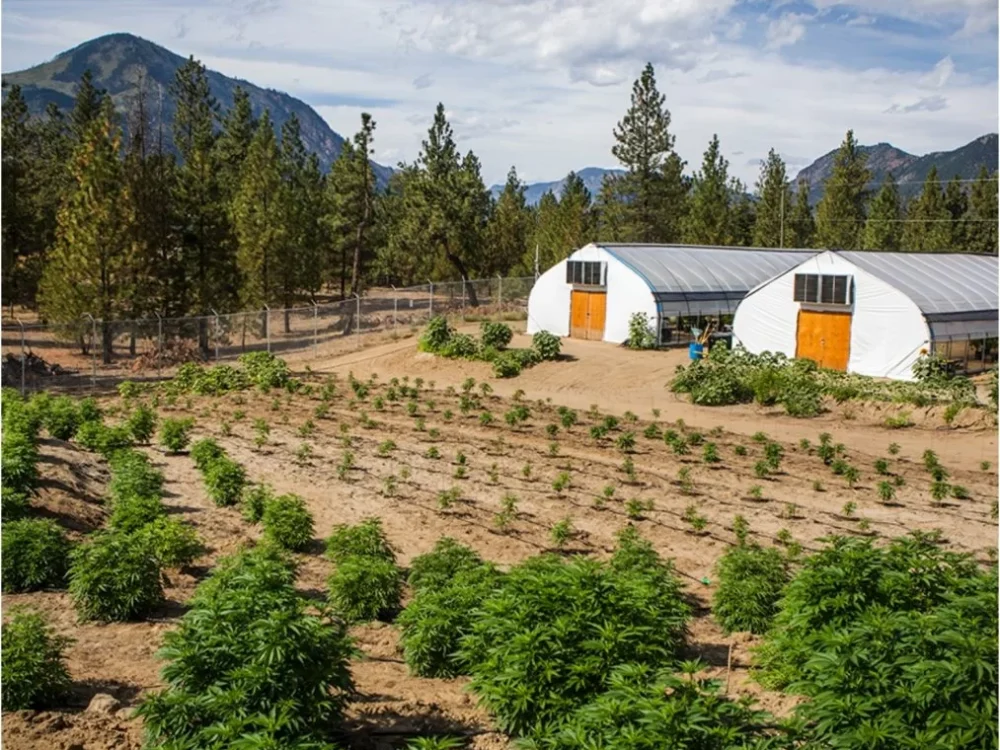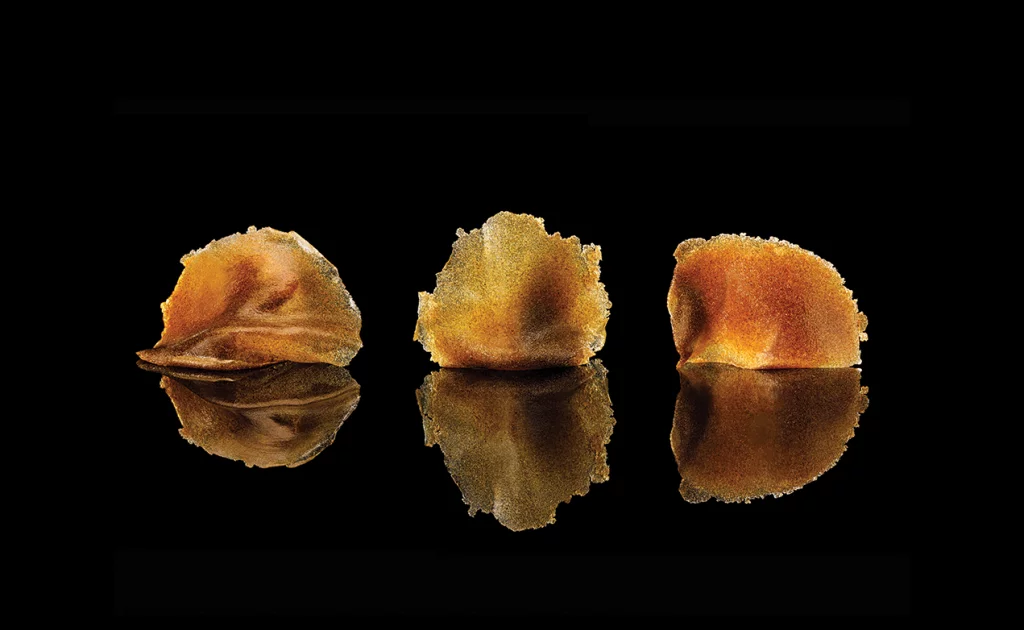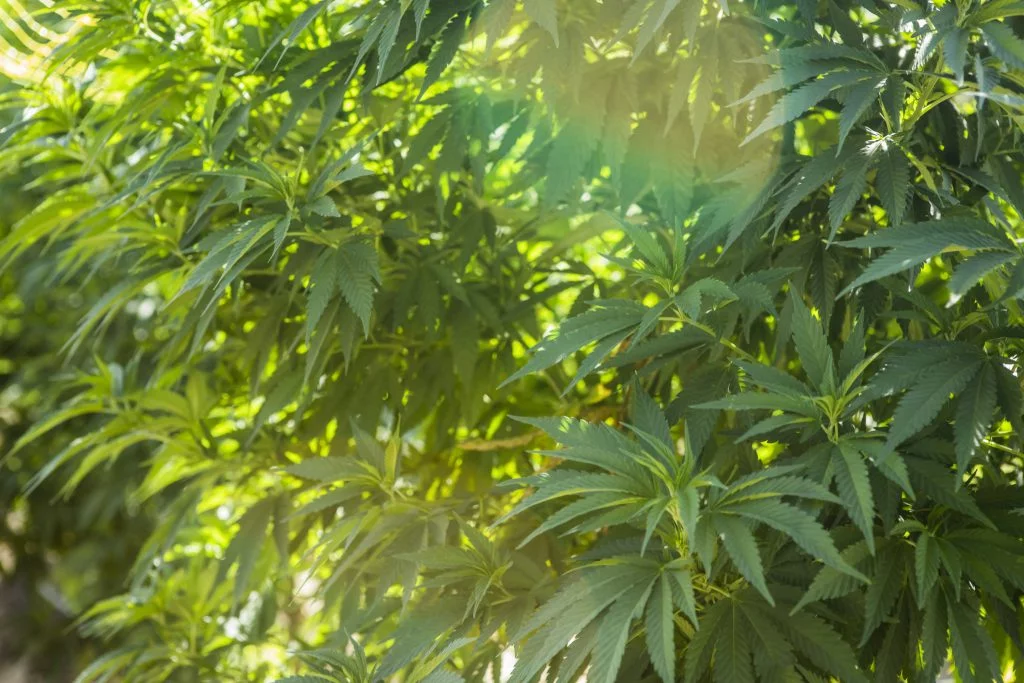Currently Empty: $0.00

What is aged hash?
Like a fine wine, hash can be aged for many years prior to consumption. A full-spectrum ice water hash, also known as bubble hash, can be aged like traditional hash to deliver a flavour that you don’t get with fresh hash. Like how liquors and wines can be aged in barrels or bottles, our bubble hash is aged in our initial mylar final packages and is not opened from the date it is packaged on.
The chemical composition of cannabis varies with age as the main cannabinoids, delta-9-tetrahydrocannabinol (THC), cannabidiol (CBD) and cannabinol (CBN), and their respective acidic forms are unstable to oxidation in air and exposure to UV. Hash from different geographical areas vary in physical appearance, density, elasticity, moisture, flavour and content. This is due mainly to different ageing processes, storage conditions, and the process the hash was created initially through. Samples of hash tested from a variety of geographical areas of the world and produced differently show varying degrees of changes in Phyto-cannabinoids over time (Martone et al., 1990).
Therefore, the aged hash is freshly cured hash which has undergone a chemical transformation to be more malleable, smoother in texture, darker in colour, and burns slowly in comparison to a fresh hash.
What does the aging process look like?
Aging hash occurs post-curing. Fresh hash is always cured for 1-4 months and remains in bulk quantities till it is ready to be portioned into smaller units for sale. At this point, the hash is ready for consumption, however, this hash is not considered aged, only cured enough to be consumed. Curing hash, like flower curing, allows gases to release without allowing oxygen in to avoid oxidation of the cannabinoids, terpenoids and flavonoids. Curing occurs in bulk quantities prior to the cannabis product being final packaged, after which the aging process starts. The aging process for hash (like wine) can be quite long, ranging from 1-10+ years.
Properly aged hash burns nicely, slowly, and evenly, while freshly cured hash burns a bit faster. Aged hash is quite aromatic and darker in colour. The texture, malleability, smoothness and burn are the distinguishing features of aged hash. Different environmental parameters are considered for storage depending on the type and quality of input used to make the hash. Storage is not to be confused with aging as aging is ultimately the transformations in phytocannabinoids, terpenoid, and flavonoid concentrations that result from storing at set environmental conditions for a period.
At EarthWolf Farms, some of our bubble hashes are aged in their final packaging, while larger batches are sometimes chosen to be aged in bulk. When we age hash in final packaging, we ensure that the freshly cured hash is in a 1-gram unit before wrapping it in parchment and placing it in a black opaque & airtight mylar bag. We do not age hash in large quantities of 500 grams but rather in final units, like wine aged in its final bottle. After taking feedback from the market with the release of our first aged products, having older packages on dates, we also decided to release a larger lot we had aged in bulk with newer packages on date.
What does aging do to hash?
Aging hash affects its flavour, texture, and aroma and is not to be confused with just long-term storage, as it requires appropriate environmental conditions to transform.
Aging in an air-tight dark glass container or in a mylar bag in a cool location allows the phytocannabinoids to isomerize, dehydrate, or cyclize (all chemical reactions) and avoid undergoing photo-oxidation. As these reactions occur, the hash changes in texture, taste and smell. Some of these changes have been studied, however, much more research is needed to explain the mechanisms resulting in these changes, which ultimately affect the quality of the hash and therefore the experience the user derives from it.
Some of the reported changes observed in aged hash include conversion of THC To CBN (Razdan et al.,1970) at room temperature (oxidation) such that THC to CBN ratios could be used as an indicator to determine the age of a cannabis product (Elsohly et al.,1992). Others have found a common volatile monoterpene, B-myrcene, to have converted during aging to a new compound now called hashishene, which results from a light-induced rearrangement of myrcene itself (Marchini, 2014).
A recent 6-month collaborative study by Frenchy Cannoli and High North Laboratories illustrates the stability of the phytocannabinoids and terpenes in hash in a set environment (temperature, humidity, oxygen, light) as it ages (Trichome Research Institute, 2021). THC and CBD levels did not fluctuate greatly when compared to the changes seen in the acidic forms of the phytocannabinoids like CBGa. THCV, which was not detected in flower form or loose cured hash, was found in a significant amount in aged hash. CBN, which was not found in the flower, but found in the loose hash form, also increased in concentration as the hash aged. Acidic forms of phytocannabinoids like CBDa and CBGa increased in potency over the 6-month period. Terpenoid levels were also monitored throughout the 6-month period, with monoterpenes seeing an increase predominately. Sesquiterpenes like Valence, which were not detected in loose fresh hash or cannabis flowers, were found in significant concentrations in the aged sample. Oxidation, degradation via decarboxylation, isomerization or cyclization of phytocannabinoids and/or terpenoids, in addition to a multiple of other unknown reactions at this time, are potentially responsible for the changes observed in aged hash when it comes to texture, smell, or burn rate. These findings are in line with previous studies on cannabis resin and inflorescence (Peschel, 2016, Lindholst, 2010), and are likely the reasons why aging hash delivers an unparalleled experience that needs to be further studied.
To investigate the impact of aging on cannabinoid and terpenoid composition, we re-sampled and analyzed multiple lots of hash for which initial release testing data were available. Analytical testing was conducted by A&L Laboratories, an ISO-accredited and licensed third-party facility that provides services across several industries, including cannabis. For terpenoid profiling, the laboratory quantifies 36–39 terpenes, which represents the validated scope of their assay. Expansion beyond this panel is currently constrained by the limited commercial availability and stability of certified terpene reference standards.
Variability in storage conditions should be considered when interpreting this study, as the sampled hash lots were stored in different environments throughout their product lifecycle, something we did not have control over due to operational changes (e.g. storage changes). Therefore, the results presented below should be interpreted with caution. Nevertheless, the data indicate a temporal decline in major cannabinoids, such as Δ⁹-THC, accompanied by an increase in minor cannabinoids, as illustrated in Table 1.
| Total THC | Total CBD | Total CBC | Total CBG | Total CBN | Total THCV | Terpenes | |
| Sample 1 Initial Test – 2022-01 | 55.25 | <0.25 | <0.25 | 5.97 | <0.25 | 0.28 | 6.02 |
| Sample 1 Retest – 2022-10 | 54.48 | <0.05 | 1.76 | 5.15 | 0.13 | 0.25 | 4.61 |
| Sample 2 Initial Test – 2023-03 | 57.66 | <0.25 | <0.25 | 5.03 | <0.25 | 0.23 | 5.12 |
| Sample 2 Retest – 2023-05 | 49.89 | <0.25 | <0.25 | 4.3 | 0.76 | <0.25 | 3.55 |
| Sample 3 Initial Test – 2021-03 | 55.19 | <0.25 | <0.25 | 4.20 | 0.41 | 1.18 | 7.14 |
| Sample 3 Retest – 2025-03 | 44.57 | <0.25 | <0.25 | 3.48 | 1.28 | 1.07 | 3.359 |
| Sample 4 Initial Test – 2021-04 | 54.23 | <0.25 | 1.45 | 1.87 | 0.08 | 0.30 | 5.97 |
| Sample 4 Retest – 2025-03 | 44.13 | <0.25 | <0.25 | 1.34 | 1.32 | <0.25 | 1.681 |
Table 1 shows the cannabinoid content of these samples over time, note the decline in THC and increase in minor cannabinoids like CBN over time.

Figure 1 shows fluctuations in concentration of minor cannabinoids (n=4) tested twice over time.

Figure 2a shows terpene degradation and conversion over time in the four samples, at different time points in the product lifecycle.

Figure 2 b shows changes in terpenes in one sample.
All four aged hash samples showed compositional changes, most notably a decrease in total CBG concentrations over time (Table 1 & Figure 1) along with THC. In contrast, CBN levels consistently increased across all samples.
Our dataset does not allow for definitive conclusions regarding THCV concentrations, and additional data from controlled stability studies will be necessary to assess the statistical significance of these observations. We did not see a significant increase in the acidic forms of the major or minor cannabinoids as previously demonstrated by research.
For terpenes, compounds such as β-myrcene, β-caryophyllene, D-limonene, and linalool decreased in concentration over time, whereas fenchone and valencene showed increases.
These findings should be interpreted with caution, as some compounds remain unmeasured due to the lack of available analytical standards or the possible presence of novel, yet unidentified constituents. The observed declines in THC, CBG, and terpene levels—without corresponding increases in individual terpenes or minor cannabinoids—suggest that additional, uncharacterized reactions may be occurring that are not yet accounted for in our analyses.
What are “Package on dates” (POD)?
Like best-before dates on certain foods and products, package on dates tell the consumer about the freshness of a cannabis product. For some products, like milk, it is essential and mandated by Canadian Food Inspection Agency, while for other products it is not. Despite not being required, best-before dates are adopted by many other industries and affect the shopping behaviour of consumers. The package on dates or packaging dates on cannabis products indicates the date the product itself was packaged in final packaged form as per section 123(1)(C)(iv) of the cannabis regulations. We believe Health Canada had the intention of introducing packaging dates to indicate the freshness of cannabis flowers, and this has rolled over to apply to 2.0 cannabis products unintentionally and remains to be explored more as companies collect stability data on their cannabis 2.0 products.
What does it mean for Concentrates such as bubble hash to have Package on Dates of less than 3 months?
It means the hash is cured to be ready for consumption and packaged in its final packaging less than 3 months ago, so it is cured but not aged.
What does it mean to have an older than 3 months Package on Date (POD)?
It means that products have “aged”, especially for concentrate products such as EWF’s bubble hashes. There is a difference between curing and aging. Curing is necessary for hash products to become consumable, while aging enriches the flavour and experience the hash delivers. Curing happens in larger quantities (e.g 250 g), whereas aging occurs in final packaging.
Conclusion
More research is needed to determine the ideal environmental settings for aging hash as it is dependent on the starting input material as well as the process it undergoes. At EarthWolf Farms, we have determined that aging bubble hash occurs best in its final packaged form in a cool and dark location. We are currently selling a few aged hash products, like our Blueberry Punch Bubble Hash, that’s over a year old, via medical redistributors like Herbal Dispatch. We welcome feedback from all who try it as we better our process of aging hash as well as its quality while maintaining a fair market price.
References
- ElSohly, M., and Ross, SA. (1999). “CBN and D9-THC concentration ratio as an indicator of the age of stored marijuana samples,” on www.unodc.org, https://www.unodc.org/unodc/en/data-and-analysis/bulletin/bulletin_1997-01-01_1_page008.htmlF.Cannoli, L.Cheng, R.Moriarity. (2021) Aging Hash, Trichome Research Institute, https://frenchycannoli.com/trichome-research-initiative
- Lindholst, C. (2010). Long term stability of cannabis resin and cannabis extracts. Aust. J. Forensic Sci. 42, 181–190. doi: 10.1080/00450610903258144
- Marchini, M., Charvoz, C., Dujourdy, L., Baldovini, N., and Filippi, J. J. (2014). Multidimensional analysis of cannabis volatile constituents: identification of 5,5-dimethyl-1-vinylbicyclo[2.1.1]hexane as a volatile marker of hashish, the resin of Cannabis sativa L. J. Chromatogr. A 1370, 200–215. doi: 10.1016/j.chroma.2014.10.045
- G. Martone, E.Della Casa. (1990). Analysis of the ageing processes in hashish samples from different geographic origin, Forensic Science International, Volume 47, Issue 2. doi.org/10.1016/0379-0738(90)90208-G.
- Peschel, W. (2016). Quality control of traditional cannabis tinctures: pattern, markers, and stability. Sci. Pharm. 84, 567–584. doi: 10.3390/scipharm84030567





